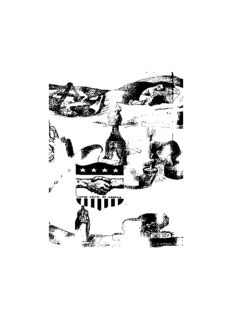Table Of Content,/
.(1
REFERENC~
COPY.
Elements of
Heat
Treatment
GEORGE M. ENOS
Late Professor of Metallurgical Engineering
WILLIAM E. FONTAINE
Associate Professor of Mechanical Engineering
Purdue University
"
Bill Billett Drawings by
FRANK ZOZZORA
University of Delaware
NEW YORK . JOHN WILEY & SONS, INC.
LONDON
Ipyright, 1953, by John Wiley & Sons, Inc.
I rights reserved. This book or any part
ereof must not be reproduced in any form
thout the written permission of the publisher.
:>rary of Congress Catalog Card Number: 53-8222
'inted in the United States of America
IURTH PRINTING, SEPTEMBER, 1962
This book is the outgrowth...of notes used in the first course in Metal
Processing given to freshman engineering students at Purdue University.
It is an attempt to set down in simple straightforward language the
basic fundamental theory involved in the heat treatment of metals.
Today more than ever before, all engineers, not only the metallurgical
engineer, become interested in the properties and the behavior of metals
in the course of their design work. It is hoped that this book will fill a
certain need felt by the engineer who is not specifically trained in metal
lurgy, but who requires a knowledge of the basic principles in this spe-
cialized area of knowledge. "
Men who work with metals in industry need to know the "why" as
well as the "how" in order that they may best discharge their duties.
The authors hope that this book will prove of value to the many people
who are eager to increase their knowledge.
This is not the sort of book that requires documentation and ex
tended reference to the literature. The authors have frequently con
sulted the Metals Handbook, 1948 edition, published by the American
Society for Metals, and Steel and Its Heat Treatment, 3 volumes, fifth
edition, by Bullens, as edited by the Staff of Battelle Memorial Institute,
published by John Wiley & Sons. Numerous other references were
also consulted, but it would be an impractical task to try to acknowledge
all sources of information and reference. Much of the elementary ma
terial must of necessity now be considered as being in the field of com
mon knowledge.
Lafayette, Indiana
April, 1953
Acknowledg ments
The authors are particularly indebted to Professor R. W. Lindley,
Chairman of Manufacturing Processes at Purdue University, who used
the material in this book in lithoprint form in the freshman course in
Metal Processing. He critically reviewed the complete manuscript and
made many suggestions which the authors feel greatly strengthened the
text.
Special thanks are due to the late Professor John L. Bray, formerly
Head of the School of Chemical and Metallurgical Engineering, and to
Professor T. J. Hughel of the School of Chemical and Metallurgical
Engineering at Purdue University, for their help in critically reviewing
parts of the manuscript.
Finally, the authors wish to acknowledge with cordial thanks, the
many suggestions made by their colleagues and by their friends in indus
try, who have been kind enough to review all or portions of the manu
script.
It is believed that due credit has been given in the captions of the
illustrations or tables that have been reproduced without essential
change. All other illustrations have been prepared by the authors.
The authors take this opportunity to gratefully acknowledge the
work of Professor Frank Zozzora of the University of Delaware in pre
paring the descriptive illustrations generally seen at the beginning of
chapters. It is felt that this type of illustration lends interest to the
elementary text and depicts graphically some of the important basic
concepts.
Purdue University
April, 1953
Contents
1 . The Nature of Metals and Alloys.
2 . The Mechanical Properties of Metals I I
3 . Steel 42
4 . The Mechanical Working of Metals 72
5 . Annealing and Normalizing 89
6 . Hardening by Quenching 116
7 . Tempering 140
8 . The Hardenability of Steels 156
9 . Alloy Steels . 193
10 . The Surface Hardening of Steel 223
11 . Cast Irons and Their Heat Treatment 238
12 . Heat Treatment of Non-Ferrous Metals and Alloys 250
13 . Equipment and Methods Used in Heat-Treating Practice 263
Index . i 277

